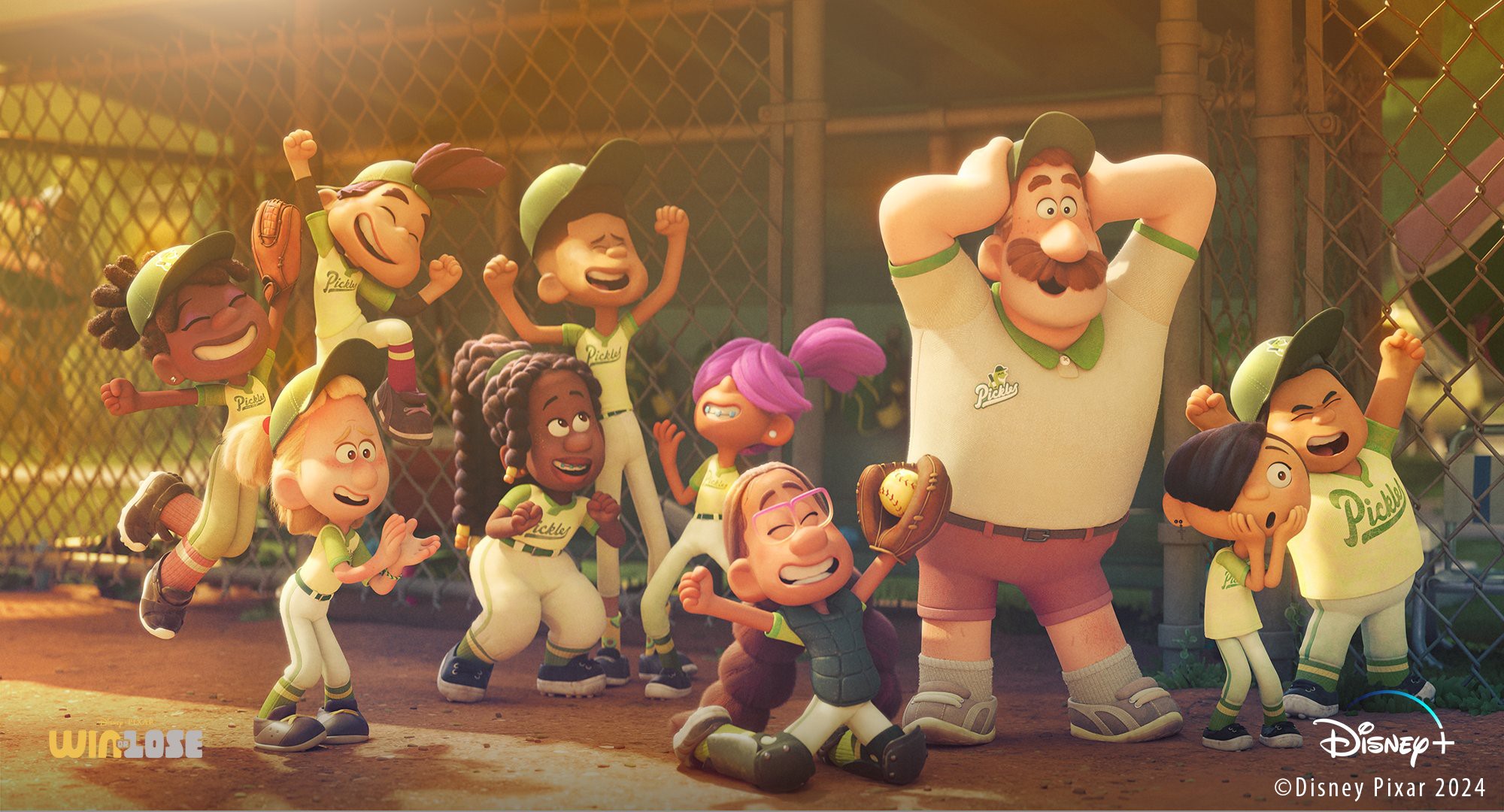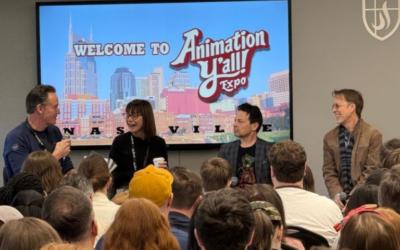Image credit: © Disney Pixar 2024
We had the opportunity to sit down with Patrick Lin and Brian Boyd from Pixar about their latest project and SIGGRAPH 2024 Talk, “Cinematography of Pixar’s Win or Lose”. This presentation will take the audience through the series’ cinematic thought process and how different camera and lighting styles are used to represent the different worlds.
SIGGRAPH: Share some background about your SIGGRAPH 2024 Talk, “Cinematography of Pixar’s Win or Lose”. Why did you choose “cinematography” as the Talk’s focus?
Patrick Lin (PL) and Brian Boyd (BB): “Win or Lose” is Pixar’s first original long-form TV series. We follow a middle school softball team in the week leading up to their championship game, and each episode is told from the perspective of a different character over the same one-week period.
The series features a simplified visual style, for both the characters and the world they inhabit. Although the designs are more cartoony, the challenges our characters face are very mature, serious, and relatable. Regrets, Insecurity, jealousy, anxiety, divorce, money, etc. To underscore the serious nature of their struggles, we had chosen a more sophisticated and realistic approach to our cinematography. The juxtapositions of this hyper-realistic camera and lighting with this cartoony world creates a unique visual style that helps to accentuate the characters’ emotions and propel the story forward.
SIGGRAPH: “Win or Lose” is Pixar Animation Studios’ first-ever original series. What was it like to work on this new project? How did it differ from working on a film?
PL and BB: A TV series has a longer running time than a feature film, but the production resources are significantly more limited. Moreover, “Win or Lose” has an enormous creative appetite, such as multiple ways to integrate 2D animation into our 3D environment, creative transitions throughout, many “oners” with extended shot length. To achieve our directors’ — Carrie Hobson and Michael Yates — ambitious vision, we had to reinvent and simplify all aspects of productions, working more creatively and collaboratively. As a result, we were able to accomplish more with less.
SIGGRAPH: Explain how different cameras and lighting styles were used to create different worlds. What techniques did you use to achieve creating these worlds?
PL and BB: “Win or Lose” is about perspective. The story unfolds between the real world and our characters’ perspective worlds. We have designed a cinematic language to help the audience differentiate between the worlds. One example is using handheld cameras and motivated light sources to represent the real world vs. control camera movement and theatrical lighting for the perspective worlds. We will talk more in depth in our presentation on 30 July.
SIGGRAPH: What was the most difficult part of this project compared to working on a film?
PL and BB: As mentioned before, the reduced resources on a TV series is definitely a challenge. But creatively, since every episode covers some of the same events from different characters’ perspectives, continuity was one of the most challenging aspects for camera and staging. The series was written episode by episode over a course of almost two years of production. Therefore, we had to go back and forth many times to rectify continuity inconsistency on many episodes. But because we were so meticulous on our continuity, we think after their first viewing, the audience will want to immediately rewatch the series to notice all the details in each episode and how moments from different character’s perspective relate to each other’s.
SIGGRAPH: What was the cinematic thought process in the creation of Pixar’s “Win or Lose”?
PL and BB: Cinematography is about storytelling, and our thought process for “Win or Lose” is no different than our approach to a feature film, which is to design a cinematic language that supports story and character’s emotions. The big difference is usually on a feature film there is only one story with one main character. However, with “Win or Lose”, we have eight stories with eight main characters. We were worried if we structured our cinematography based on each character’s story, it might be too visually incoherent as a whole. So, we needed to find a common throughline that can work for all characters. Ultimately, we had decided on a language that is based on “Reality” vs. “Perspective”, which we believe gave our visuals more structure across all episodes and made our cinematography more meaningful.
SIGGRAPH: What do you hope SIGGRAPH 2024 participants take away from your Talks presentation?
PL and BB: “Win or Lose” is classic Pixar storytelling with stunning visuals and incredible emotional depth. We hope our talk can give the audience a special insight into the cinematic thought process of the series and to prepare them for what Drew Taylor from The Wrap described in his article as “one of the best things Pixar has done, maybe ever.”
Register for Full Conference or Virtual Access to hear this Talk at SIGGRAPH 2024.

Patrick Lin joined Pixar Animation Studios in September 1997 as a layout artist on “A Bug’s Life”. For over 26 years, Lin’s work has been a part of 28 Pixar projects, including 15 feature films, eight short films, three TV series, and two theme park attractions. Lin served as director of photography on five Academy Award® winning feature and short films, “The Incredibles” (2004), “Up” (2009), “Inside Out” (2015), “Bao” (2018) and “Toy Story 4” (2019).

Starting his animation career in 1988, Brian Boyd joined Pixar in September 2000 as a lighting artist on “Monsters Inc” (2001). He has worked on 28 Pixar films since that time, including the role of director of photography on “La Luna” (2011), “The Blue Umbrella” (2013), “Lou” (2017), and “Win or Lose” (2024).



